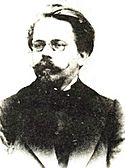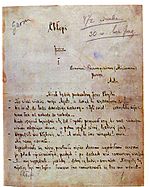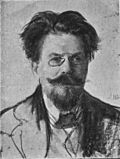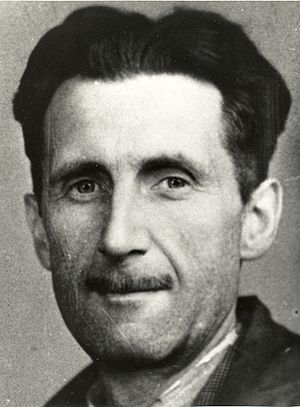Władysław Reymont facts for kids
Quick facts for kids
Władysław Reymont
|
|
|---|---|
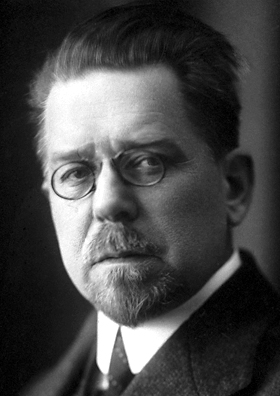
Reymont in 1924
|
|
| Born | Stanisław Władysław Rejment 7 May 1867 Kobiele Wielkie, Congress Poland, Russian Empire |
| Died | 5 December 1925 (aged 58) Warsaw, Poland |
| Nationality | Polish |
| Period | 1896–1924 |
| Genre | Realism |
| Literary movement | Young Poland |
| Notable works | The Promised Land (1899) The Peasants (1904–1909) |
| Notable awards | Nobel Prize in Literature 1924 |
| Signature | |
 |
|
Władysław Stanisław Reymont (born Stanisław Władysław Rejment; May 7, 1867 – December 5, 1925) was a famous Polish writer. He won the Nobel Prize in Literature in 1924. His most well-known book is a four-part novel called Chłopi, which means The Peasants.
Reymont grew up in a family that was once noble but had become poor. He was supposed to become a tailor, but he chose a different path. He worked as a railway gateman and an actor. His travels helped him write short stories that showed life as it really was. His first big success was the novel The Promised Land in 1899. This book showed the big differences between rich and poor, the struggles of different cultures, and how workers were treated unfairly in the industrial city of Łódź. The book aimed to show how much industrial growth changed society. In 1900, Reymont was badly hurt in a train accident. This stopped him from writing until 1904, when he published the first part of Chłopi.
Władysław Reymont was very popular in Poland, especially during the time of communist rule. People liked his writing style and the symbols he used. His books often showed a romantic view of country life and quietly criticized capitalism. His work is part of the Young Poland movement, which focused on new artistic ideas like literary impressionism.
Contents
About His Name
Reymont's birth certificate shows his name as Stanisław Władysław Rejment. He changed his last name from "Rejment" to "Reymont" when he started publishing his books. He did this to protect himself from trouble with the Russian government. At that time, Poland was divided, and he had published a book in Austrian-controlled Poland that the Russian ruler might not have liked. Some people also think he changed it to avoid a connection with a Polish word, rejmentować, which means "to swear" in some local dialects.
His Life Story
Reymont was born in a village called Kobiele Wielkie. He was one of nine children. His father was an organist, and his mother was a good storyteller. His family was from the Polish nobility but had lost their wealth. Reymont spent his childhood in Tuszyn, near Łódź, because his father moved there for a better church job.
Reymont was a very determined child. After a few years of school, his father sent him to Warsaw to live with his older sister and her husband. The plan was for him to learn how to be a tailor. In 1885, he passed his exams and became a journeyman tailor. This was his only official education.
But Reymont never worked as a tailor. Instead, he ran away to join a traveling theater group. He also worked in "garden theaters" in Warsaw. Without money, he returned home and got a job as a gateman at a railway crossing near Koluszki. He earned 16 rubles a month. He ran away two more times: once to Paris and London, and again to join another theater group. He wasn't a good actor, so he always came back home. Reymont also lived in other places and even thought about becoming a monk. Later, he bought a large house in Kołaczkowo.
How He Became a Writer
In 1892, a newspaper in Warsaw called Głos (The Voice) published his writings about places like Rogów and Koluszki. This made him move back to Warsaw with some stories he hadn't published yet. He visited newspaper offices and met other writers who saw his talent.
In 1894, he went on an eleven-day trip to Częstochowa. He wrote about this experience in a report called "Pielgrzymka do Jasnej Góry" (Pilgrimage to the Luminous Mount), published in 1895. This is seen as a great example of his travel writing.
Reymont sent his short stories to different magazines. Good reviews encouraged him to write novels. His first novels were Komediantka (The Deceiver) (1895) and Fermenty (Ferments) (1896). He was no longer poor and could travel. He visited Berlin, London, Paris, and Italy. Then, he spent months in Łódź gathering ideas for a new novel. This book, Ziemia Obiecana (The Promised Land) (1899), earned him enough money to travel to France. There, he met other Polish writers living away from home.
In 1900, Reymont received 40,000 rubles as payment after a serious train accident. While he was recovering, Aurelia Szacnajder Szabłowska took care of him. He married her in 1902. Thanks to her, he traveled a bit less, but he still spent time in France, where he wrote parts of Chłopi between 1901 and 1908. He also visited Zakopane in Poland. In 1919, he traveled to the United States. Reymont wanted to own land and tried to manage an estate near Sieradz in 1912, but it didn't work out. In 1920, he bought a mansion in Kołaczkowo near Poznań, but he still spent winters in Warsaw or France.
Winning the Nobel Prize
In November 1924, Władysław Reymont won the Nobel Prize in Literature. He was chosen over other famous writers like Thomas Mann and George Bernard Shaw. Many people in Poland thought Stefan Żeromski should have won. However, Reymont received the prize. He couldn't go to the award ceremony in Sweden because of a heart problem. The prize money, 116,718 Swedish kronor, was sent to him in France, where he was getting medical treatment.
In 1925, feeling a bit better, he went to a farmers' meeting. There, a politician named Wincenty Witos welcomed him and praised his writing. Soon after, Reymont's health got worse. He passed away in Warsaw in December 1925 and was buried in the Powązki Cemetery. His heart was placed in a pillar of the Holy Cross Church in Warsaw.
Reymont wrote about 30 books. These include travel reports like Pielgrzymka do Jasnej Góry (Pilgrimage to Jasna Góra) (1894) and Z ziemi chełmskiej (From the Chełm Lands) (1910), which was about unfair treatment of a religious group. He also wrote short stories about theater, village life, and railways. His novels include Komediantka, Fermenty, Ziemia obiecana, Chłopi, and Wampir (The Vampire) (1911). He also wrote a three-part historical novel called Rok 1794 (1794) between 1911 and 1917.
His Most Important Books
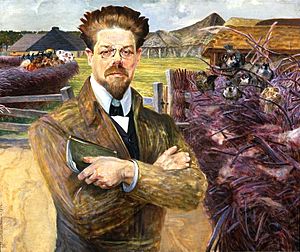
Writers often say Reymont's style was like Naturalism. This means he wrote about life exactly as he saw it, without making things up. Reymont didn't have much higher education and couldn't read other languages. He knew his strength was writing about real life, not about complicated literary ideas.
His novel Komediantka tells the story of a girl who runs away from her small town to join a traveling theater. She hopes to escape her boring life, but instead finds a world full of tricks and fake people. In Fermenty, the next book, the girl goes back to her family and accepts her life. She realizes that dreams don't always come true and marries a rich man who loves her.
Ziemia Obiecana (The Promised Land) is probably Reymont's most famous novel. It shows a detailed picture of the city of Łódź during the time of the industrial revolution. It's a dramatic story about the struggle to survive. The city hurts everyone, whether they try to succeed or not. The main characters, a German, a Jew, and a Pole, all become morally damaged. This dark story shows how people can become cruel and how rules of fairness disappear. Reymont wanted to show how industrial growth and city life can harm society.
Ziemia Obiecana has been translated into at least 15 languages. It has also been made into two movies, one in 1927 and another in 1975 by Andrzej Wajda.
In Chłopi (The Peasants), Reymont created a very real and powerful picture of country life. The book feels very true to life, showing the customs, behaviors, and beliefs of the people. It's written using the local dialect, which makes the characters and their culture feel very real. Reymont set the story in Lipce, a real village he knew from his time working on the railway. The story takes place over ten months in the 19th century. The rhythm of village life is set by the seasons and religious holidays, not by history.
The book is divided into four parts, named after the seasons: Autumn, Winter, Spring, and Summer. This shows the never-ending cycle of village life. Within this cycle, Reymont shows a colorful community with clear descriptions of each person. The book explores human experiences and spiritual life, much like old stories from the Bible or Greek myths. Reymont didn't try to teach lessons or push ideas. He trusted his understanding of life and the people he wrote about. While you can see parts of Naturalism or Symbolism in the book, it's mostly a Realistic novel. No single style can fully describe it. The Peasants has been made into two movies (in 1922 and 1973) and translated into at least 27 languages.
Revolt
Reymont's last book, Bunt (Revolt), was published in 1924. It tells the story of animals who take over their farm to create "equality." But the revolt quickly turns into cruelty and violence.
This story was a way for Reymont to talk about the Bolshevik Revolution of 1917. Because of this, the book was banned in communist Poland from 1945 to 1989. It was banned along with George Orwell's similar book, Animal Farm. Reymont's novel was printed again in Poland in 2004.
His Books
- Pielgrzymka do Jasnej Góry (A Pilgrimage to Jasna Góra, 1895)
- Komediantka (The Deceiver, 1896)
- Fermenty (Ferments, 1897)
- Ziemia obiecana (The Promised Land, 1898)
- Lili : żałosna idylla (Lily: A Pathetic Idyll 1899)
- Sprawiedliwie (Justly, 1899)
- Na Krawędzi: Opowiadania (On the Edge: Stories, 1907)
- Chłopi (The Peasants, 1904–1909), won the Nobel Prize for Literature in 1924
- Marzyciel (The Dreamer, 1910)
- Rok 1794 (1794, 1914–1919)
- Wampir – powieść grozy (The Vampire, 1911)
- Przysiega (Oaths, 1917)
- Bunt (The Revolt, 1924)
Books Translated into English
- The Comédienne (Komediantka) translated by Edmund Obecny (1920)
- The Peasants (Chłopi) translated by Michael Henry Dziewicki (1924–1925); translated by Anna Zaranko (2022)
- The Promised Land (Ziemia obiecana) translated by Michael Henry Dziewicki (1927)
- Polish Folklore Stories (1944)
- Burek The Dog That Followed the Lord Jesus and Other Stories (1944)
- A Pilgrimage to Jasna Góra (Pielgrzymka do Jasnej Góry) translated by Filip Mazurczak (2020)
See also
 In Spanish: Władysław Reymont para niños
In Spanish: Władysław Reymont para niños
- Fable
- Young Poland
- List of Polish writers
- List of Polish Nobel laureates


